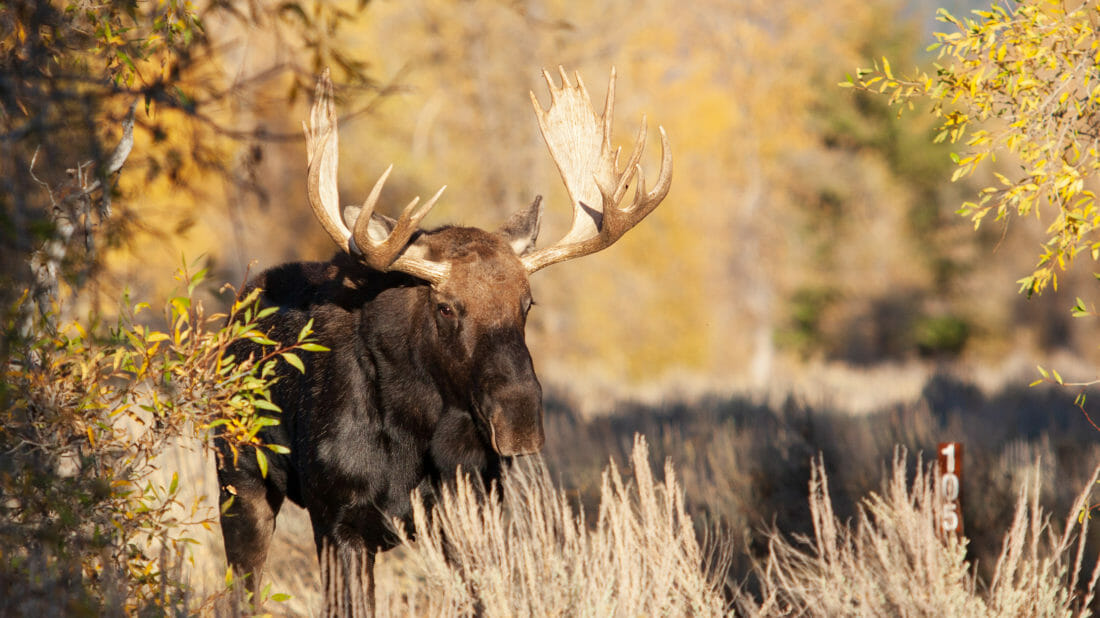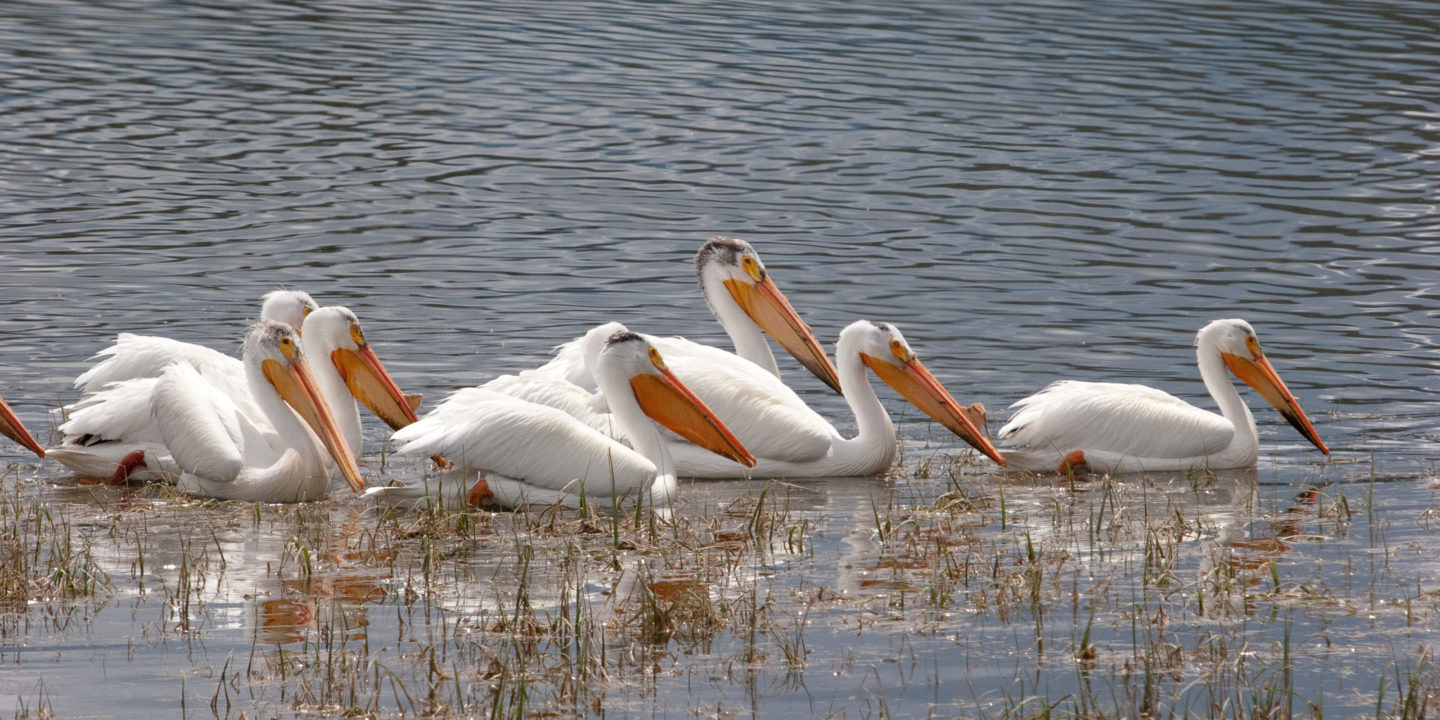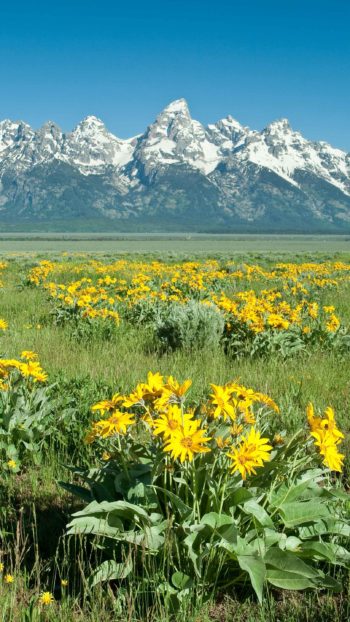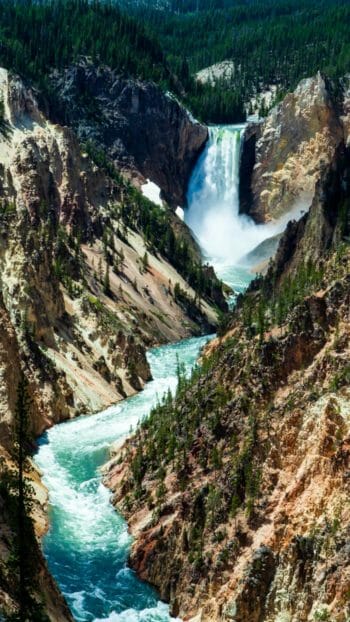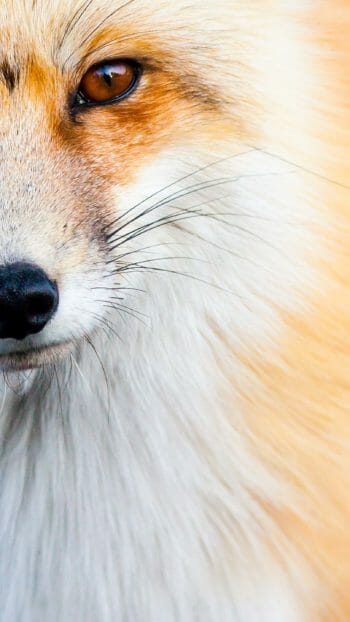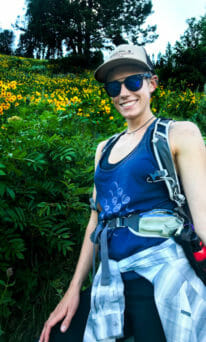How do Seasons Affect Wildlife in the Greater Yellowstone Ecosystem?
Yellowstone National Park is only one piece of a much larger ecological puzzle. At 2.2 million acres, it is the largest National Park in the contiguous United States, yet is still dwarfed by the entirety of the biosphere it is a part of. At 22 million acres, the Greater Yellowstone Ecosystem, also dubbed the “GYE”, envelopes two national parks, five different national forests, a wilderness area, part of the Wind River Reservation, multiple wildlife refuges and Bureau of Land Management territory. You might wonder what the value is of the GYE. On the surface it may just look like an expanse of land located in a remote, less inhabited part of the country, while the reality is that it is the closest approximation the lower 48 states have left of a fully intact ecosystem.
An “intact” ecosystem means that the Greater Yellowstone Ecosystem contains an abundance of wilderness unbroken enough by human development that the native biodiversity has been maintained. Millions of visitors come to places like Yellowstone National Park or Grand Teton National Park to see nature at its purest, whether that be geothermal features like Old Faithful or to observe rare wildlife such as grizzly bears and the gray wolf. Many may not realize they are immersing themselves in such an exclusive part of the natural world, where wildlife thrives and is more impacted by the change of seasons than the presence of burgeoning metropolitan sprawl.
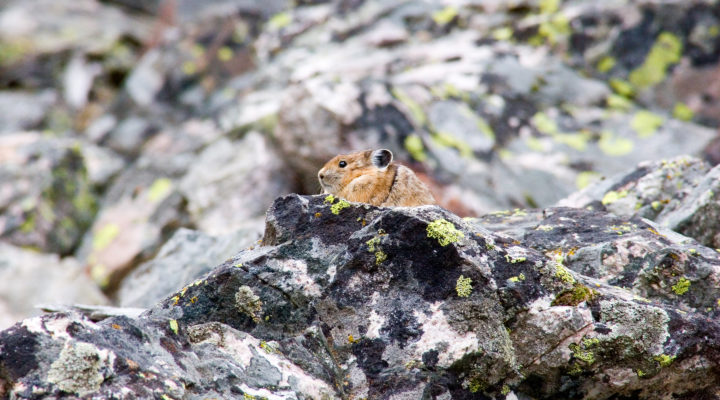
Each season within the Greater Yellowstone Ecosystem has a unique impact on the grand variety of wildlife within it. Due to the extreme contrasts between frigid winter weather and summer heat, the multitude of animal species alter their behavior in order to survive. Many of these adaptations predate humankind’s presence in the GYE, allowing us to witness a piece of what this land might be like in our absence.
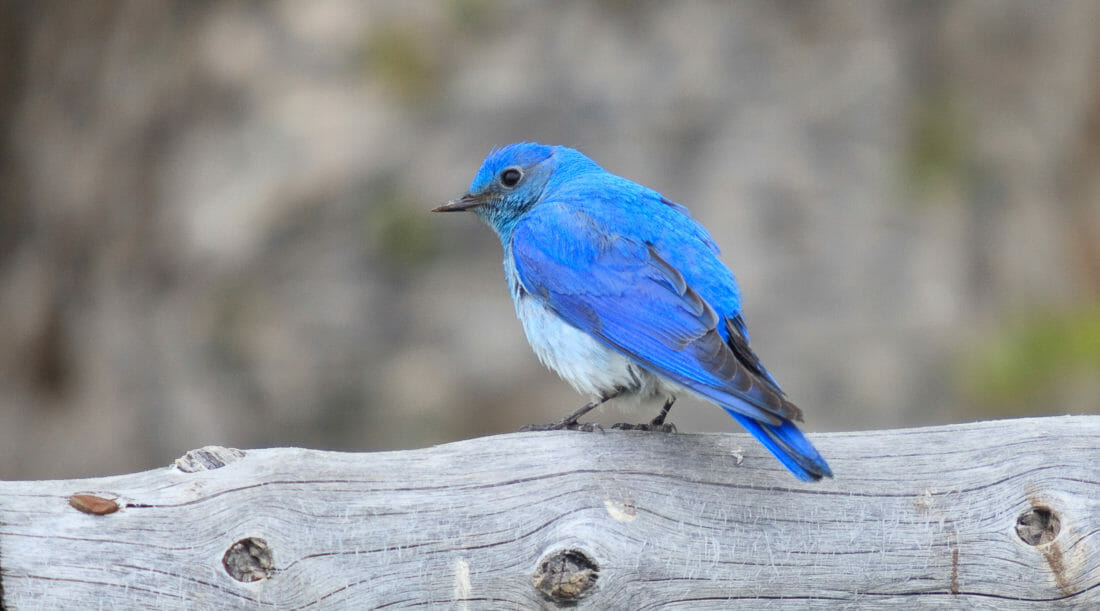
Winter
The Greater Yellowstone Ecosystem contains a wide variety of high alpine and desert habitat, creating a fluctuating elevation gradient which greatly impacts how certain areas are affected by the seasonal cooling of winter. Elevations can vary between 4,000ft to well above 13,000ft above sea level, an incredible contrast that delineates where the most snowfall will occur and how cold it could get. For instance, at 8,000 feet in elevation, winter temperatures could potentially drop below -20 degree Fahrenheit (-28C), and believe it or not, wildlife still survives through such extremes!
As temperatures begin plummeting below freezing and snow starts accumulating across the landscape, most animals will grow a thick winter coat to ward off the cold. Those that have paws instead of hooves will also grow more fur between the pads of their feet, which aids in distributing bodyweight to allow them to walk across the top of snow. The snowshoe hare is a wonderful example of this, which has evolved large back feet and will also turn white for winter in order to evade predation during this season.
The gray wolf on the other hand, uses those fuzzy paws in order to more easily chase down prey, such as elk, which might have to struggle through multiple feet of snow in order to escape. Wolves have even perfected staying warm during the coldest period in the Greater Yellowstone Ecosystem by curling up in a ball with their tail draped over their nose and paws for insulation. Just as we celebrate Valentine’s Day in winter, the wolf’s mating season starts in February and can extend into March. By this time, a breeding pair will be seeking out a potential den site, where after 60 days of gestation, a litter of potentially 1-10 pups are born. These pups will remain in the den until spring when they will be able to romp around in the warmer weather.
The two other wild canids found in the GYE do fairly well in winter too. Instead of hunting big game like their larger cousin, the coyote and red fox will be seeking out small mammals under the snow. Mice, pocket gophers and voles will be tunneling under snow banks throughout winter, producing enough sound that the keen ears of the coyote and fox can pick it up. With incredible triangulating skills these canines can pinpoint exactly where that small rodent is, then will leap up and dive muzzle-first into the snow to hopefully snatch up a meal.
So how do the herbivores of the Greater Yellowstone Ecosystem survive the winter? This is a fairly difficult time of year for species like bison, elk and moose. With larger body sizes they typically cannot walk across the top of snow and therefore have to plow their way across the landscape. For this reason, most of these wild vegetarians will trek into lower elevations for winter where snow levels will be shallower. The pronghorn takes this to the extreme, being adapted for drier, warmer habitat, this species will evacuate areas like Jackson Hole and migrate 150 miles south to the Green River Valley. Their route is one of the longest remaining migratory corridors left in the GYE, with others having been obstructed by human development. This is a great example of how vital protecting the entirety of the Greater Yellowstone Ecosystem is, preserving just one locality is usually not enough for wildlife, many species require long tracts of connected, natural habitat in order to survive.
While the pronghorn, along with some groups of mule deer, are some of the longest migrating mammals in the Northern Rocky Mountain Region, most other varieties of hoofed herbivores will not travel as far for winter, including: bison, moose, white-tailed deer, elk, bighorn sheep and mountain goats. These animals will find less snowy areas where food is more accessible and moving around is easier, such as southern facing slopes that get more sun exposure, wind swept hillsides and cliffs, and conifer forests which provide protection from wind. An incredible adaptation these species possess is their ability to digest cellulose, which is the protein found in plants, something humans and carnivores cannot do. They key is having a multiple compartmented stomach, typically herbivores in the GYE have four compartments with the largest being the rumen. The rumen contains a vast array of microbial organisms that through fermentation can break down the woody vegetation, grasses and leaves being consumed. A byproduct of this process is heat, meaning these herbivores, also known as ruminants due to this unique organ, basically have a portable furnace inside them!
There are two distinctive groups of wildlife in winter, those that stay awake through it, and those that don’t! For some species, the lack of food and cold temperatures would be unsustainable, so they have evolved to hibernate. Grizzly and black bears are some of the iconic hibernators of the Greater Yellowstone Ecosystem. Typically by December, most bears would have found a hibernation den, which is usually in a northern facing slope where more insulating snow will accumulate. A bear might dig out a hibernation chamber, or find a hollow tree or rocky cave or crevice to utilize. During this period many of the bear’s bodily functions are altered. Metabolism, heart rate and breathing will slow down, allowing the fat stores the bear builds up in fall to last longer. For the most part, a bear will not defecate, urinate or eat for all of hibernation, which could last into April or June! Even more amazing is that female bears will give birth while hibernating, though this unfortunately doesn’t mean they sleep through it. Bears breed in summer, but the fertilized egg will not begin to grow within the female until she goes into hibernation, a breeding strategy called “delayed implantation”. Gestation lasts only 3 months, then 1-4 tiny cubs will be born and immediately begin nursing and rapidly growing.
Many other small animals hibernate as well, such as the yellow bellied marmot, Uinta ground squirrels, chipmunks, bats, snakes and frogs. The most impressive of these would be the Uinta ground squirrel, which is the longest hibernator in the Greater Yellowstone Ecosystem. They will sleep the winter away for 8-9 months! They emerge from hibernation dens come spring once enough snow has melted and food is accessible.

Spring
The blanket of snow that grows over winter throughout the Greater Yellowstone Ecosystem often begins to recede around March in lower elevations, and by April or May in areas closer to high alpine habitat. As the sun warms the soil and dormant vegetation, the ground will eventually “spring” back to life with vibrant green grasses and wildflowers. Yellow blooms of varying species are typically the first to speckle the landscape, commonly consisting of biscuitroot, desert parsley and arrowleaf balsamroot. These are all vital food sources for multiple wildlife species. Not only will the herbivores begin blissfully browsing on these more nutritious foods, but so will bears. Approximately 80-90% of a bear’s diet in the GYE is plant matter, and as they begin to wake up from hibernation they will be seeking out open, sunny fields with plenty of vegetation to forage for. With 4-5 inch long front claws the grizzly bear will be digging up wildflowers with nutritious roots, while the black bear typically grazes on grasses and will skillfully climb up trees to munch on tender tree buds and leaves. The mother bears, known as sows, will have their cubs in tow as well, which she will be raising for the next 2-3 years.
Bears are not the only wildlife that will have babies by this time of year. Usually starting in May, the bison begin to give birth as well. Bison are one of the first ungulates (the scientific word for “hoofed animal”) to have their calves for the season. A mother bison, who could weigh anywhere between 1,000-1,500lbs, will birth a single 40lbs calf, which will be up and walking potentially 15 minutes later. Most ungulate babies will be quick to get on their feet, an adaptation to evade predators which would find a 40lbs calf to be a tasty snack. One of these predators could be the wolf, which by this time of year will be supporting a litter of pups that might still be in the den or just starting to meander outside of it. While the mother wolf is busy nursing or pup-sitting, the rest of the pack will be working hard to bring her, and the pups once they start to be weaned, food. Due to their size, bison is not a typical food source for wolves, but when young are being born that is an opportunity for a wolf to aim for a smaller, more vulnerable target.
By early to mid-June, elk, moose and deer will begin having their babies. These three animals are all part of the “cervidae”, or deer family. The young of both elk and deer are born speckled with white so they can camouflage themselves, as the mother will often leave the little one while she forages. Deer fawns and elk calves are both scentless for a few days after birth so predators cannot easily detect them, if danger is present the mother will actually try to lead it away from her offspring knowing it would smell her scent instead. Unfortunately, grizzly bears have figured out this behavioral trick and will go tromping through tall grasses near where the mother animal was in order to find where the baby might be hiding. It may seem bleak, but this is a vital food source for these carnivores, (or in the case of bears “opportunistic” carnivores), during this time of year.
Moose calves, in contrast, will stay close to their mother, who will be browsing on budding willows and cottonwood trees along rivers, lakes and beaver ponds. By June, most bodies of water below 8,000ft in elevation begin to thaw, meaning moose will have one more food source available to them- aquatic vegetation. Affectionately called the “swamp donkey” for this reason, this species is often seen belly deep in water, sticking its entire head under the surface to reach vegetation like pondweed, bulrush and water lily. Moose will stay in lower elevations near water during spring, but as the summer heat increases some may move into more mountainous terrain seeking shade and cooler temperatures.
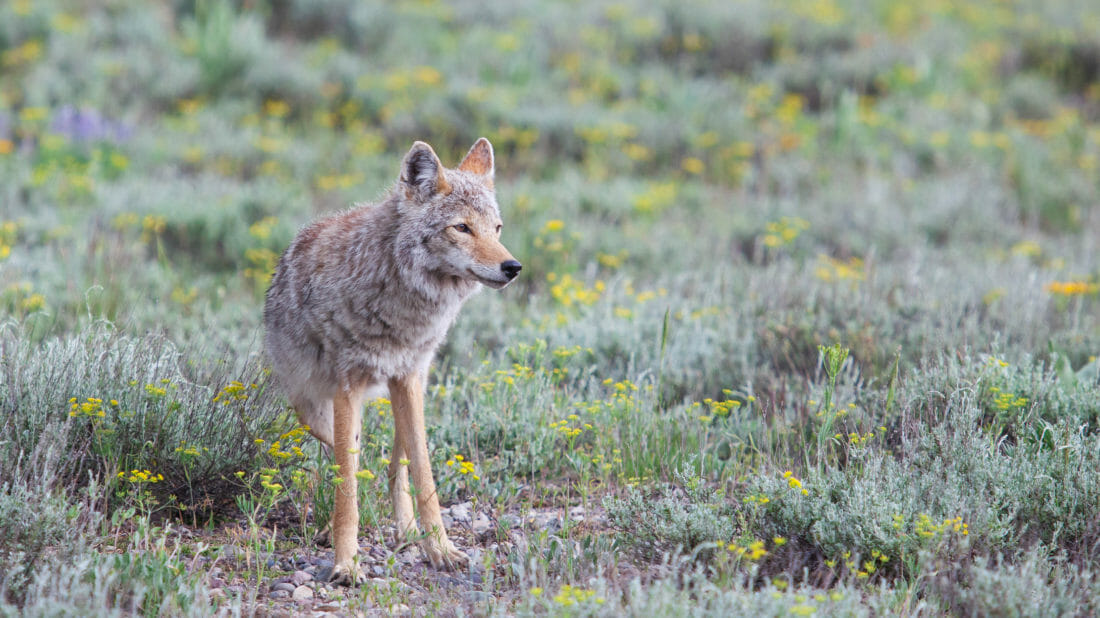
Summer
As the extreme cold of winter presents challenges to wildlife, so does the heat of summer. In the desert habitats found in the Greater Yellowstone Ecosystem temperatures could potentially exceed 100 degrees fahrenheit (37C), the risk of drought is imminent as well. For this reason pronghorn will migrate from these lower elevations and head for higher ground where there will be more water available and more lush vegetation to feed on. As mentioned prior, some pronghorn make the iconic 150 mile trip from the Green River Valley to Jackson Hole, where the high elevation Teton Mountain Range has a combination of glaciers and permanent snowfields that will melt and provide fresh water all summer long. By late June, the pronghorn begin to have their young, with a female usually birthing two 7-9lbs fawns. These might be some of the most energetic babies in the GYE, being able to walk within half an hour of being born and could outrun a human in just a few days.
Elk, deer and moose will more strictly stick to their crepuscular behavior as temperatures rise, which means being most active at dawn and dusk when it is cooler. They will also move from areas like the valley floor of Jackson Hole, which is around 6,200ft in elevation, into the surrounding mountain ranges where there is more tree cover and nutritious food sources. Throughout July, both the summer heat and seasonal shortage of rain will drive the once vibrant green grasses and plants of the valley to brown up and die. By this point the Greater Yellowstone Ecosystem is entering the fire season. Naturally, wildfires are beneficial for the ecosystem, usually caused by lightning strikes during dry summer storms. The fires will burn dry, dead vegetation and rapidly break it down so nutrients like nitrogen can be returned to the soil. In burning forests, which may seem devastating, wildfire actually opens up the canopy so sunlight can reach the ground and support the growth of smaller plants which becomes beneficial foraging grounds for species like deer, elk and even bears.
Multiple sources of food for bears become available during July. The army cutworm moth migration starts, which seems like it would have nothing to do with bears, but as this insect accumulates on talus (loose rock) slopes the bear buffet begins. During the day the moths will burrow themselves into the rocks to escape the sun, and the bears, more often grizzly than black bear, will come through flipping stones and slurping up every moth in sight. A bear could consume 40,000 of these bugs per day which equates to about 20,000 calories! By mid-July another food source ripens, one that might be more appetizing to humans as well. In the ample pine forests of the Greater Yellowstone Ecosystem the wild huckleberry grows, usually in older growth forests where the understory is clearer and decomposing pine needles has increased the acidity of the soil. Both grizzly and black bear alike will wade through these berry patches and clean the low growing shrubs of their fruits.
Aside from eating all summer, bears will also be entering their breeding season. This can begin as early as May, with most copulations occurring later in June. Sows without cubs will be courted by a boar (male bear) for hours or days before breeding might occur. In contrast, females with cubs will be working to evade the boars as much as possible. This is due to the fact a male bear will kill the cubs in order to drive the mother back into estrus so he can breed with her. Infanticide might seem counterintuitive to the survival of a species, but this behavior is driven by the instinctual need of that male to pass on his own genetics and eliminate the competition of other lineages.
Bison will typically remain along the valley floors and plains habitats of the GYE in summer. It is incredible that a beast that could weigh up to 1 ton can survive the heat, but on top of shedding its thick winter coat, it does have some behavioral adaptations for keeping cool. A common hobby for bison in summer is wallowing. Upon finding a dusty patch or a cool puddle of mud, this animal will roll its bulk around until nicely coated. The dust and mud will work its way into the fur of the bison which will help cool the skin, and also provide protection from biting insects. By August, the bull bison will be especially busy wallowing, as this is part of their breeding display. Breeding season reveals this relatively quiet cow-like species for the true wild animals they are. The bulls will begin intermingling with the females more and advertise their brute strength by vigorously wallowing, fighting each other and emitting deep throated bellows.
To evade the heat, wolves will generally be hunting more between dawn and dusk in summer, choosing to bed down in shady areas during the hottest part of the day. A pack is usually restricted to remaining near the den site until the pups are old enough to keep up, by that point the pack will be highly mobile and depending on where the prey is, could be in a different territory on a daily basis. While in winter elk comprise nearly 90% of a wolf’s diet, come summer that will drop to 15% due to a greater variety of prey animals being available. Wolves will be hunting a variety of ungulate young, mice, squirrels, hares, birds and even beaver!
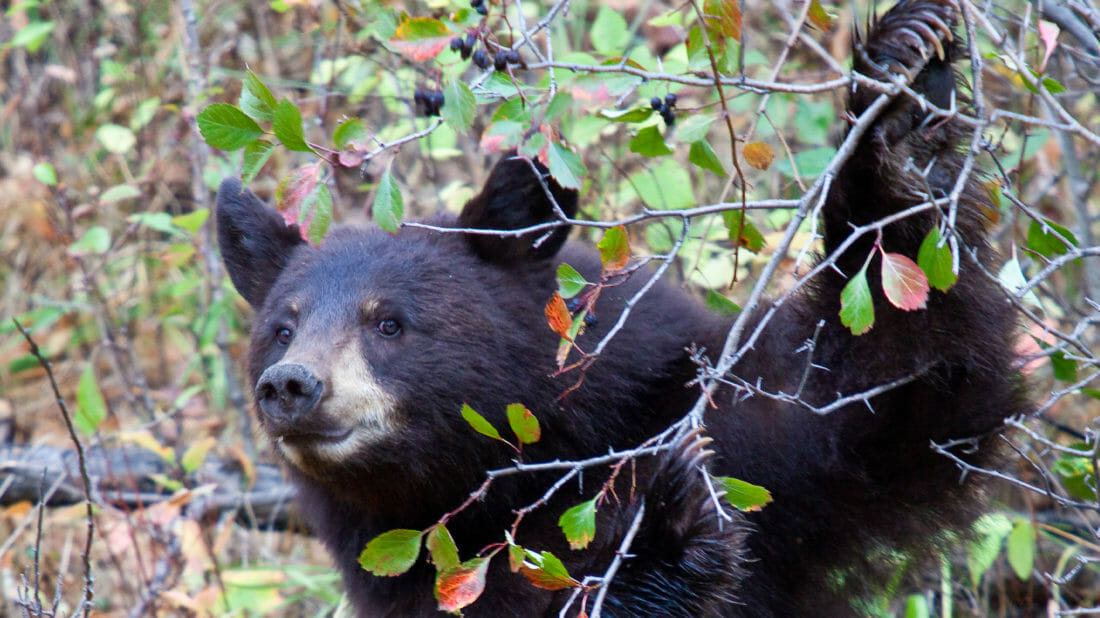
Fall
By September the days in the Greater Yellowstone Ecosystem begin cooling off as the summer gives way to fall. However, as temperatures drop atmospherically, things begin to heat up for moose, elk and deer as these species enter their rutting (breeding) season.
Since losing their antlers in winter, the male members of the cervidae family begin growing those bony structures back. Elk have the fastest antler growth rate, gaining as much as an inch a day. In the early stages of regrowth, the antler is composed of a cartilaginous material, and is coated in a thin tissue called velvet, which supplies blood and nutrients. Once fully grown, the male will scrape off the velvet to reveal the bone underneath, and soon after, the rut begins. Moose have the largest antlers of any animal in North America, potentially weighing up to 40lbs each. The bulls will be courting females along waterways where he will create muddy wallows mixed with his own urine. Breeding season will also drive moose out of their typical shrubby habitat, as males will occasionally chase females through open fields and across roadways.
While moose are customarily courting one female at a time, the elk, deer and even pronghorn males will be busy cultivating a harem. The male of either species could have as many as 20-30 females in a harem, which he will be busy breeding with and warding off other “satellite” males that will try to sneak in to court a claimed female. The bull elk is one of the most vocal during this period, releasing that iconic high pitched bugle which will hopefully entice females and warn other males of his location. Similar to bison, the rut is an exhausting time for these animals, when a male elk can potentially lose up to 20% of his body weight!
By late fall and into early winter the bighorn sheep will also be rutting. The rams (males) will be courting ewes (females) in estrus, with multiple rams potentially pursuing one female at once. This is when the classic head butting behavior will occur, where two males will charge at each other at 40mph and strike their 30lbs spiral horns together. This is a test of strength and dominance, with one male ending up the subordinate and retreating- or maybe even being pushed over the edge of a cliff. Incredibly equipped with a thicker skull and sponge-like material filling the horns, the shock of violently smashing their heads together is absorbed and the rams do not succumb to any brain trauma.
While many ungulate species are busy expending energy for breeding season, bears are busy trying to stock up as much as possible. During the fall, bears enter a stage of hyperphagia, in which they experience relentless, excessive hunger. Both grizzly and black bears will be consuming 20,000-30,000 calories a day, and putting on as much as 4lbs per day. This is all in preparation for hibernation, which as we know, is a period this animal will not be feeding at all. The fat stores cultivating during hyperphagia is what the bears will live off of until it wakes up in spring. Fortunately during the fall there is an ample amount of food available. A variety of berries ripen during this season, including hawthorne, western serviceberry, chokecherry, thimbleberry and whortleberry. The pine nuts of the whitebark pine tree will also mature, which bears can climb to the cones to access or dig up the middens from red squirrels who are very adept at collecting the pine nuts. Some bears may even be able to opportunistically feed on bison, elk, moose or deer carcasses of males that were critically wounded during the breeding season.
Fall is a frenzied time for many wildlife species in the Greater Yellowstone Ecosystem. Though as the frost begins crystalizing the terrain on a nightly basis and the threat of snow increases, some animals begin their migrations to lower elevations and others tuck themselves away for hibernation. As winter continues to close in, a cool tranquility settles across the land and the cycle of the seasons begins once again.
